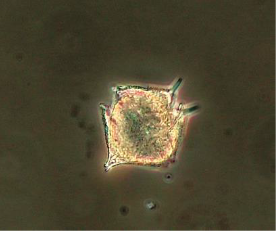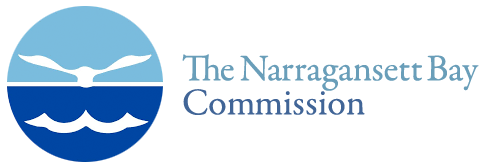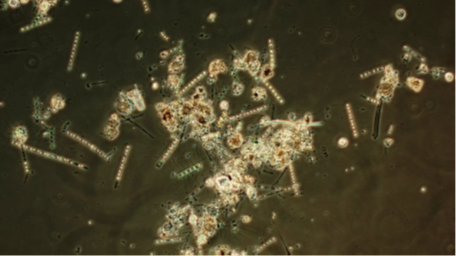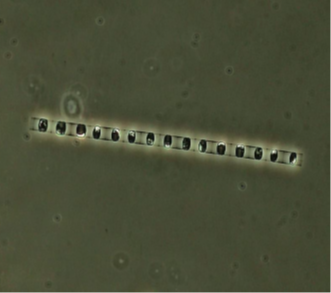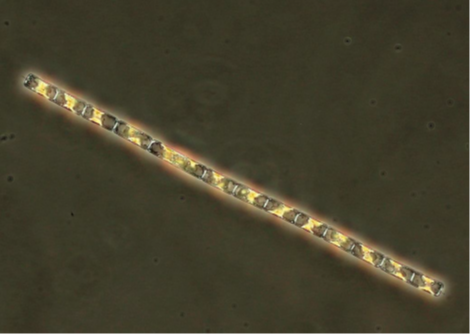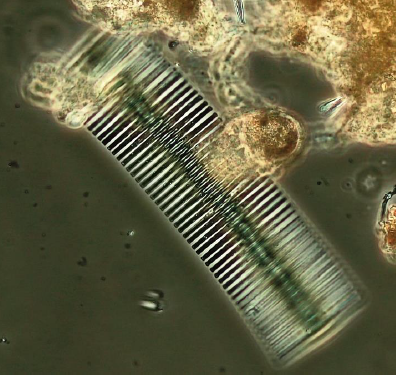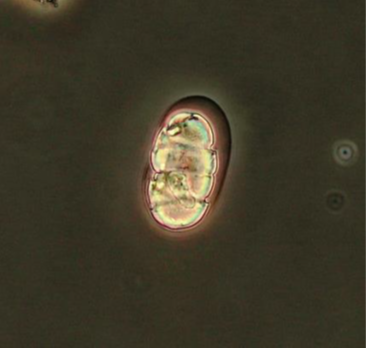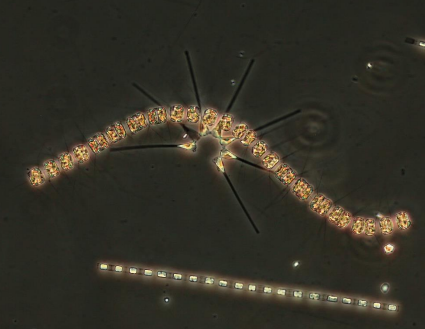July 9-15, 2023
Phytoplankton samples were collected on July 12, 2023 at Bullock Reach and analyzed in the laboratory shortly after collection. Sondes data revealed the surface water temperature was 25.529⁰C, salinity was 21.40 psu, and chlorophyll a was 11.25 ug/L. Small sea jellies were observed today on Narragansett Bay. The plankton tow net sample was filterable with a 20 micron mesh. The filtrate was a green- tan color and had a medium filter time. The tow net sample was analyzed qualitatively for microorganisms using phase contrast microscopy. The whole water sample was analyzed quantitatively under 200x phase contrast microscopy. A Hensen Stempel pipette was used to accurately deliver 1ml of sample to a Sedge-wick Rafter chamber. This analysis revealed a total of 1,124,000 cells per Liter. The micro flagellates were found at 198,000 cells/L. The most predominant phytoplankton genus was Skeletonema spp.at 772,000 cells/L. Other representative genera include Chaetoceros spp., Thalassiosira spp., and Eutreptiella spp.
200x phase contrast image of Protoperidinium spp.
